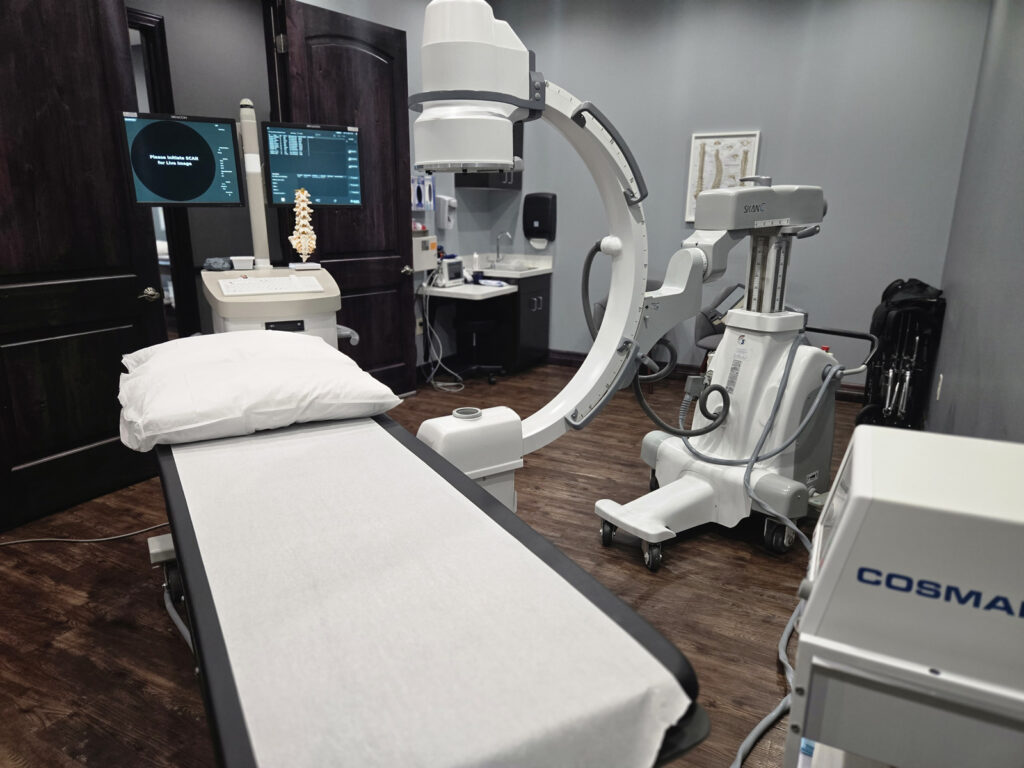Hip Injections
Hip Injections
Targeted Relief for Hip Joint Pain
Hip injections place a small amount of medication into or around the hip joint to reduce pain and inflammation or to confirm the joint as the pain source. Depending on your needs, we may use:
- Steroid injections to calm inflammation inside the joint
- Diagnostic anesthetic injections to identify the true pain generator
- Regenerative medicine options in select cases to support healing
These injections can offer short-term relief and valuable diagnostic insight to guide your long-term plan.

How Hip Pain Develops?
- Arthritis (osteoarthritis or rheumatoid arthritis)
- Labral tears or cartilage wear
- Tendonitis or bursitis around the hip
- Impingement or structural abnormalities
- Overuse or acute injury
Good To Know
- Inflammation can cause deep aching in the groin, outer thigh, or buttocks, sometimes radiation down the leg.
How The Procedure Works
1) Preparation
The skin is cleaned and numbed. We review your goals and answer any questions.
2) Precision Targeting
Under fluoroscopy (x-day) or ultrasound, a thin needle is guided into the joint to deliver anesthetic and/or steroid.
3) Recovery
You go home the same day and can resume light activity. Relief often begins within hours and may last weeks to months.
Benefits & Who It Helps
- Reduces pain and inflammation
- Improves mobility and walking tolerance
- Helps confirm whether the hip is the pain source
- Minimally invasive; outpatient
- May delay or reduce the need for surgery
Risks & Safety
Hip injections are generally safe. Temporary soreness, minor bleeding, or medication reaction can occur. Infection or nerve injury is rare when performed under guidance by an experience pain physician.
Insurance accepted. Most plans, including Medicare, cover hip injections when medically necessary. We’ll verify your benefits and guide next steps.

Your Questions Answered
You may be a candidate if you have persistent hip or groin pain from arthritis, labral tears, bursitis, or other hip conditions that haven’t improved with medication, physical therapy, or activity modification.
Most hip injections contain a mix of a local anesthetic (for immediate relief) and a corticosteroid (to reduce inflammation and provide longer-lasting results).
You’ll feel a brief pinch and some pressure when the needle is placed. Local anesthetic helps keep you comfortable, and image guidance ensures accuracy.
Relief may begin within hours due to the anesthetic. Steroid medication usually takes 2–5 days to start working fully.
Relief often lasts several weeks to months, depending on your condition. Some patients get longer relief, especially when combined with therapy or lifestyle adjustments.
Risks are rare but can include temporary soreness, bleeding, or infection. Serious complications are extremely uncommon when performed under image guidance.
In most cases, steroid injections can be repeated a few times per year if needed. Your doctor will guide you based on your medical history and condition.
